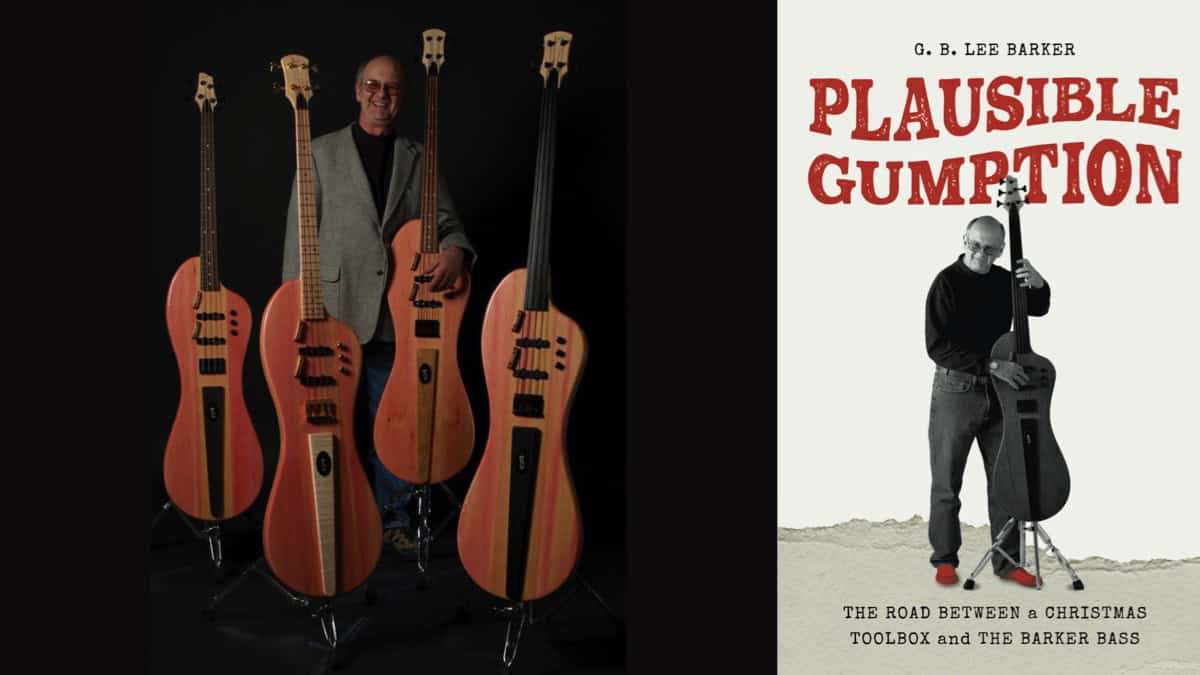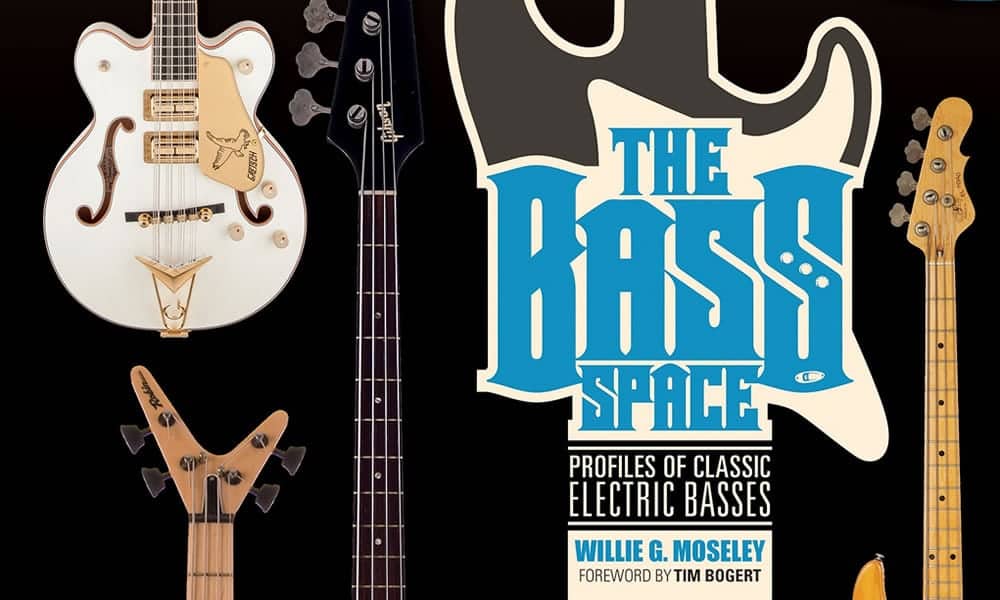Bass Books
John Patitucci Walking Bass

John Patitucci Walking Bass: How to Play Walking Basslines On Any Chord Sequence – For Upright & Electric Bass…
Even if you’re playing a scale run, it’s possible to make it sound like the most beautiful piece of music you ever heard!” – John Patitucci
John Patitucci is one of the few world-class bass players who is equally respected for both electric and upright bass. In John Patitucci Walking Bass, he shares his strategy for building powerful, melodic walking basslines that both upright and electric jazz bass players can use to perfect their skills.
Play jazz basslines by thinking like a composer
At the heart of his walking bass method, John Patitucci teaches you to think compositionally, and you’ll discover that walking bass is not just a way to connect the chords by any means. He demonstrates how everyline can be a strong melodic statement in its own right.
The musical way to master walking bass, with John Patitucci
You’ll hone these essential skills on electric and upright bass:
- How to compose and use well-conceived basslines with strong, driving melodies
- Hundreds of walking bass movements so you can discover John’s jazz vocabulary
- How to tastefully spice up the harmony and walk on the most common progressions in jazz
- A simple strategy to adapt your basslines when the chord changes are altered or substituted
Melodic walking bass from simple to complex
John Patitucci Walking Bass begins with a look at the essential ii V I VI7 sequence that forms the backbone of hundreds of jazz standards. However, each chapter develops this sequence further with essential harmonic concepts to alter the harmony… each of which becomes more radical as you progress.
This incremental bass method teaches you to walk on any chord changes, no matter how radical.
- Discover the Four Guiding Principles John uses to compose strong, memorable basslines that have interest and momentum
- Learn to focus your basslines to start simple, then add layers of complexity
- Master 15 specially composed bass etudes that give unparalleled insight into John’s walking bass approach and vocabulary
Each one of John Patitucci’s 15 beautiful bass etudes is broken down into easy-to-digest cells, so you can learn quickly and efficiently.
Master Two-Beat and Four-Beat walking bass feel
Playing half time or “two-beat” is a technique all the bass masters have used, from Ray Brown to Paul Chambers. Each of John’s 15 walking bass etudes begins with a two-beat passage to help you develop a deeper sense of feel and swing, before moving into a regular walking pattern.
Level-up your jazz bass skills today
It’s rare you get the opportunity to sit down with a true bass legend and learn exactly how they work their magic. In Walking Bass, John Patitucci unravels the mystery of bass virtuosity.
- He demystifies the complexity of walking bass, giving you clear, easy principles that work every time to create great music
- He shows you where to focus your efforts to get immediate results from your practice time
- He teaches his rock-solid solid strategy for playing over even the most complex jazz changes, so you never miss a beat
… and much more!
Don’t just play walking bass, hear it!
To help you capture his time and feel John recorded each of the 15 musical etudes in his NYC studio. You can download them all for free from our dedicated website.
John Patitucci Walking Bass is available at Amazon.com
Bass Books
Interview With Barker Bass’s Inventor and Writer Lee Barker

If you are an electric bass player, this is an exciting time to be alive as this relatively new instrument evolves around us. Some creative individuals have taken an active role in this evolution and made giant leaps in their own direction. Lee Barker is one of these inventive people having created the Barker Bass.
Fortunately, Lee is also an excellent writer (among so many talents) and has recently released his book “Plausible Gumption, The Road Between a Christmas Toolbox and The Barker Bass”. This book is a very fun read for everyone and shares a ton of details about Lee’s life in general, his experiences as a musician, a radio host, and a luthier. Now I am fortunate to have the great opportunity to gain even more insights into this renaissance man with this video interview.
Plausible Gumption, The Road Between a Christmas Toolbox and The Barker Bass is available online at Amazon.com
Bass Books
Ultimate Look at Electric Basses from 1930 to Today

The Bass Space: Profiles of Classic Electric Basses.
The definitive book for lovers of the low-end. Willie G. Moseley, Senior Writer for Vintage Guitar Magazine, profiles more than 100 historic and unique electric bass models from such makers as Alembic, Danelectro, Fender, Gibson, Gretsch, Guild, Hamer, Kramer, Rickenbacker, and many others.
Rare and legendary instruments, from the earliest attempts at amplified basses in the mid-1930s to the cutting-edge instruments of today, are presented in more than 250 color and period photos.
The main feature of this book is the exclusive coverage of historic and one-of-a-kind basses owned and played by such famed musicians as: Bill Black (Elvis Presley), Tim Bogert (Vanilla Fudge), Mark Egan (Pat Metheny Group), John Entwistle (The Who), Paul Goddard (Atlanta Rhythm Section), Bruce Hall (REO Speedwagon), Greg Lake (Emerson, Lake & Palmer), Benjamin Orr (The Cars), Tom Petersson (Cheap Trick), Carl Radle (Derek and the Dominos), Gene Simmons (Kiss), Steve Wariner, and others.
The Bass Space: Profiles of Classic Electric Basses is available online at Amazon.com
Bass Books
Review: The Bastard Instrument, A Cultural History of the Electric Bass by Brian F Wright

I was intrigued when The Bastard Instrument showed up on my desk… let’s dig in!
When we dive into the history of our beloved instrument, the bass, we find roots that go back as far as the 15th century. This instrument was a member of the violin family and was for the longest time, an acoustic instrument. As the years passed and music changed, there was a need for the instrument to evolve and the electric bass was born.
Comparatively, the electric bass is a relatively new instrument with its earliest appearances dating back to the 1930s and it is exciting to be an electric bass player while this history unfolds around us. Fortunately for us and future generations to come, Professor Brian F. Wright has taken on the herculean task of documenting the trajectory of the electric bass with this excellent book.
The Bastard Instrument presents an extraordinary amount of fine details about the instrument itself, the development of the amplification to handle its output, the pioneers that dared play it, the rapidly evolving music that flourished because of its presence and so much more.
When I first started reading this book, I noticed that it felt a tad academic, like a textbook (it might be one someday) or a doctoral thesis, but to present all this information accurately, this approach is more than appropriate. Another detail that might be a bit of a spoiler is that the book only gets us up to the late ’60s. I was left wanting more as we know that so much has happened in the bass world since that time frame; I hope there is another volume in the works to get us up to the present!
All in all, “The Bastard Instrument, A Cultural History of the Electric Bass” is a must-read for all of us who play electric bass and understand its essential place in music.
I found that there was a lot that I already knew but also quite a bit that I was unaware of. I believe that to know and understand where you are, you must know the history of exactly how you got here.
Highly recommended.
The Bastard Instrument is available at Amazon.com (beginning July 2024)
Bass Books
Review: The Bassist’s Complete Guide to Injury Management, Prevention and Better Health

The Bassist’s Complete Guide to Injury Management, Prevention and Better Health
I have often thought that it would be great if the doctors who delivered us as newborn babies provided us with a user manual to help us navigate through life in the best way possible. Now Dr. Randall Kertz, D.C. has produced a manual specifically designed to address the many possible afflictions plaguing us bass players.
Many of you will remember volumes 1 & 2 of this book and our first review in 2007. The new complete guide combines the two volumes and features over 20 pages of new material including interviews, techniques, and conditions.
If you play bass, you can read this book cover to cover and walk away with a ton of relevant and helpful knowledge. Another option is to search out issues relevant to you specifically (I found quite a few of my own with helpful options). This is possible because the book is very nicely organized into six chapters that address Pain, Conditions, Techniques, Road Issues, Inspirational Q&A with some of the biggest names in the bass community (too many to list here) and finally How to get relief.
All said, this book is essential if you play either electric or upright bass to the point where they should issue you one when you get that first bass in your hands.
Lastly, if you have this book and you have specific questions, Dr. Kertz is readily available through his website, www.drkertz.com. As if that was not enough, he has a wealth of knowledge you can find right here on our website at bassmusicianmagazine.com/author/randallkertz
Get this book… Live long and play bass well into the years! Available on Amazon.com
Bass Books
The Bassist’s Complete Guide to Injury Management, Prevention & Better Health

The Bassist’s Complete Guide to Injury Management, Prevention & Better Health is now available!

A compilation of Volumes 1 & 2 of the acclaimed Bassist’s Guide with 20+ pages of new interviews, techniques, and conditions, The Complete Guide puts everything in one convenient place.
Available at Amazon.com and from our friends at Bassline Publishing
Follow Dr. Kertz’s Bass Player Health at Bass Musician Magazine





















